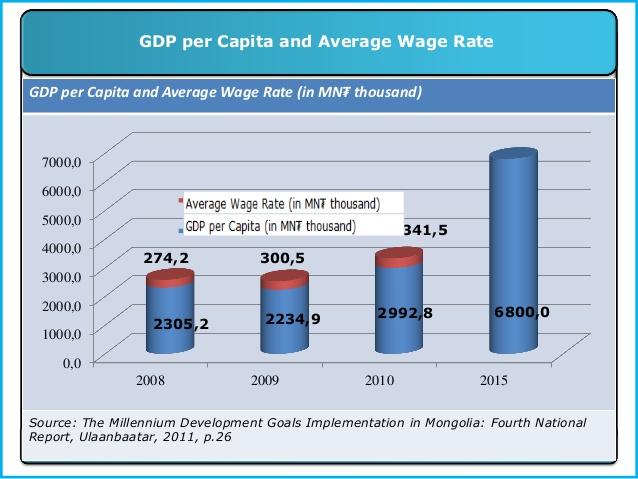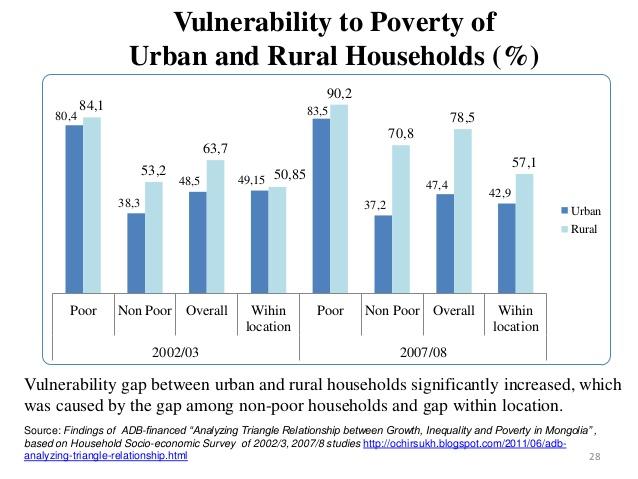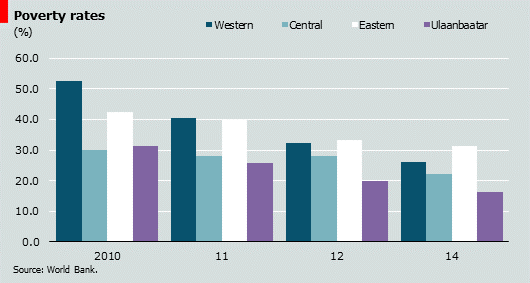Introduction
Sustainable Development Goals (SDG) post-2015 agenda was an outcome of deliberations by the global society, through the United Nations, to try and find ways of addressing socio-economic and environmental challenges following the expiry of the Millennium Development Goals (Sovacool & Drupady, 2016). The global society realized that in the fight to eliminate poverty and improve living standards, it was important to ensure that there is sustainability in economic activities.
Scientists have raised concerns over the rising global temperatures and a change in climate due to massive pollution. As such, the global society is trying to find ways of achieving development that is sustainable. Mongolia is one of the nations that have strongly supported the post-2015 SDG as a way of improving its economy without jeopardizing the ability of the future generation to meet their needs. For a long time, Mongolians have heavily relied on agriculture as the main source of their income. About one-third of the country’s population lives in rural areas. Most of these rural dwellers depend directly or indirectly on agriculture.
Gungaadorj (2002) says that agricultural production in Mongolia has significantly dropped within the last two decades. The reduction in agricultural production has been blamed on climate change. The regular rains that benefited farmers have become erratic. Cases of destructive storms are also on the rise. There is also the issue of rural to urban migration, especially among the younger population who are now seeking white-collar jobs. A comparative analysis of the lifestyle of the city dwellers to that of the people living in rural settings shows that rural dwellers have lower living standards. They are more vulnerable to poverty. In this paper, the researcher seeks to identify the measures of well-being of rural development statistics and propose possible ways to improve well-being indicators of rural statistics that can provide ways of tracking the performance of the SDGs.
Comparative Analysis of SDGs in Mongolia
Focus on SDG in Mongolia
It is important to understand the fundamental differences between millennium development goals (MDG) and sustainable development goals (SDG). According to Smith (2015), while MDG primarily focused on poverty eradication, SDG looks at how the livelihood of people can be improved today and in the future. SGG goes beyond achieving economic success and complete poverty eradication. It also looks at ways of protecting our environment and several other socio-political factors that not only affect the current but also the future generation. SDG is one of the nations that have embraced SDG as a way of addressing the socio-economic and environmental issues affecting it. The country is very optimistic that this program will help its population lead a better life than what is currently witnessed. The figure below shows the progress that has been made in achieving the MDG from 2008 to 2015.

As shown in the above statistics, the nation has made impressive steps in achieving MDG. The statistics show that the Average Wage Rate (AWR) increased consistently since 2008. It means that on average, Mongolians’ earnings are on the rise. The Gross Domestic Product per Capita (GDP per Capita) is also increasing consistently. The GDP per Capita in 2015 was about triple the value that was registered in 2008. It is a sign that on average, life is getting better in Mongolia.
The well-being indicator shows that more people are migrating from below the poverty line to the middle class. However, Smith (2015) warns that GDP per Capita often makes a major assumption that may make the nation forget a section of its population. The GDP is an average earning. As more people become very rich, the GDP will rise even if a section of the society still lives in abject poverty. It means that this measure does not give a clear picture of wealth distribution in the country. To achieve SDG, it is important to have a more comprehensive focus on the entire population, including the new section of the poorest that has, for a long time been ignored in the statistical surveys of the past. In this paper, the focus of SDG will be narrowed down to the fight against poverty as one of its fundamental principles.
Poverty Profile in Mongolia
When MDG was developed in 2000, it was expected that by 2015, poverty shall be eliminated among the nations that had ratified it. However, it became apparent that many people still live in abject poverty when SDG was developed in 2015. As such, poverty eradication was one of the key objectives of SDG that was developed in 2015. In Mongolia, poverty is still an issue that the government is still trying to address among its people. A Living Standards Measurement Survey conducted by Gungaadorj (2002) showed that poverty headcount remained unchanged in Mongolia from 1995 to 1998.
The poverty level was estimated to be 36%. Another statistic conducted by the World Bank showed that there was a new trend in the wealth gap that most studies have always ignored, the gap between the poor and the poorest. The statistics showed that the gap between the poor and the poorest was widening almost at the same rate as that between the rich and the poor. This worrying trend was confirmed by a survey conducted by the National Statistical Office of Mongolia which indicated that there was an emerging population among the rural dwellers whose annual earnings were way below the poverty line (Gungaadorj, 2002). As a section of the society continued to amass more wealth that rival that of the richest people in the world, another section was sliding deep into poverty than what had previously been captured.
According to Smith (2015), this new segment of the poorest may have been ignored for a long time because of the parameters used in measuring wealth and income in the past. Studies often focused on asking the respondents if their earnings were below a specific level that was considered a poverty line. However, the recent surveys that ask respondents to state their average income per given period have revealed that some Mongolians are barely managing to get the basic needs such as food, shelter, and clothing. The majority of them are rural dwellers who rely on subsistence farming to earn a living. When rains fail, they get seriously affected because they rely on their crops almost entirely. A small section is urban dwellers that lack properly defined jobs and have no skills to be hired in some of the emerging companies in the region. The figure below shows a comparative analysis of the vulnerability to poverty among the rural and urban households in Mongolia.

In this comparative analysis, the population is classified into three different groups and the overall. They include the poor, the non-poor, and those within the location. There are multiple comparisons of people in different social classes, in different years, and based on their residence (rural and urban). As would be expected, the poor are more vulnerable as compared to the other groups. Smith (2015) attributes this vulnerability to the rising trend where the rich are amassing more wealth at the expense of the poor. Although the average wage rate has been on the rise, there are still some people who earn very little because they lack alternative jobs due to their limited skills. A comparative analysis of vulnerability to poverty for the years 2002/2003 and 2007/2008 shows a shocking outcome as shown in the above statistics. People are becoming more vulnerable as time goes by.
The poorest are the worst affected group, possibly become they rely more on subsistence farming that has become very unreliable become of erratic weather patterns. This is evident when comparing the vulnerability of the rural dwellers to that of the urban dwellers. In 2002/2003, 84.1% of the rural poor households were vulnerable compared to 80.4% of the urban poor households. The vulnerability increased in 2007/2008. In this period, it was estimated that 90.2% of the rural poor were vulnerable compared to 83.5% of the urban poor. Further comparative analysis of those within location shows the gap in vulnerability among those in urban centers compared to those in rural settings. In 2002/2003, it was estimated that 49.15% of the urban households and 50.85% of the rural households were vulnerable. The gap between the two groups was about 1.7%. In the period 2007/2008, it was estimated that 42.9% of the urban households and 57.1% of rural households were vulnerable. The gap between urban and rural households in vulnerability had increased by over 4%.
In the above comparative statistics, one fact that comes out is that rural households are becoming more disadvantaged economically than urban households. The vulnerability of the poor rural dwellers is now over 90%, and there are clear signs that show it may become worse if actions are not taken soon enough. The comparative statistics below confirms the argument that those in the rural areas still have to deal with the issue of poverty more than their colleagues in urban centers.

As shown in the above statistics, the average poverty rate in Mongolia is dropping. However, the reduction rate is greater in urban (Ulaanbaatar) than in rural settings. Improving rural development statistics in support of SDG is, therefore, very important and the stakeholders should focus on improving the existing measures. As the lifestyle of urban households improves, efforts should be made to ensure that rural households are not left behind.
Possible Indicators for Rural Development Statistics
It is estimated that about one-third of the Mongolians (1 million people) live in a rural setting. Most of these rural dwellers largely rely on agriculture. According to Sovacool and Drupady (2016), “the country has very little arable land as most of its area is covered by grassy steppe with mountains to the north and west and the Gobi Desert to the south,” (p. 56). Farming using traditional methods that wholly rely on nature is almost impossible in the region. It explains why rural dwellers are more vulnerable to poverty than those in urban centers. It is important to find indicators for rural development statistics in different pillars for these rural households. Based on the above comparative analysis, the following are the proposed pillars that should be given a serious focus.
Sustainable Income Growth for Rural Households
Rural poverty can only be eradicated by creating sustainable income growth in these regions. The aim is to ensure that their expenditure capacity is improved significantly and sustainably. As Gungaadorj (2002) says, the solution should be long-lasting other than being a quick-fix. The government should find ways of increasing the rural household’s income through various strategies discussed in the section below. The approach should be broad-based on the source of livelihood of individual families. Whether they are employed hence expect to be paid salaries or they are self-employed in the agriculture or mining sectors, there should be a consistent rise in their income. This will help in reducing their vulnerability to poverty.
Quality Social Service Delivery for Rural People
Social services such as healthcare, access to sporting and entertainment facilities, good security, clean water supply, and many other government-sponsored services also define the quality of life of people. In most cases, these amenities tend to be more concentrated in urban settings as opposed to rural areas. This should not be the case anymore. The rural households need these social amenities just as much as urban dwellers. Their well-being is dependent on them.
Sustainable Use of the Environment and Natural Resources
Rural households are better placed to enjoy natural resources than those who are in urban centers. Farming and mining are some of the best ways of using the environment and natural resources sustainably. The fact that the country is sparsely populated makes it easy to practice commercial farming if modern methods are effectively employed. Livestock keeping can also be another aspect of farming that rural households can consider. A report by Smith (2015) indicates that over 80% of Mongolia’s exports are minerals, a sign that this industry is doing well. However, more can be done to help improve the living standards of the people living in rural areas.
Increased Involvement in Policymaking
Public participation in policymaking is becoming a major issue in various parts of the world. People now demand to be consulted whenever it is necessary to come up with major policies that may affect their life in one way or the other. The well-being of rural people depends on the policies embraced by the government. There is no better way of taking care of the well-being of these people than to involve them in making policies. It may be an involving process but it is important as the country tries to achieve SDG.
Cost-Effective Ways to Produce Proposed Indicators
The proposed indicators should be realized to help improve the well-being of the rural dwellers in Mongolia. It is necessary to come up with cost-effective ways to produce each of these indicators.
Sustainable Income Growth for Rural Households
To have sustainable income growth for the rural households, the national government, in collaboration with the local authorities and foreign investors, should invest in local industries in the rural settings, especially the areas where the population is high. These industries will assure the locals of sustainable income through stable jobs. Farmers should be supported through grants and soft loans to mechanize their production.
Quality Social Service Delivery for Rural People
Affordable healthcare should be considered a basic need for all the Mongolians, whether they are staying in rural or urban centers. More healthcare facilities should be put up in the rural areas. These hospitals should be fully equipped. These people should also have access to properly equipped learning institutions. Running water is important, especially for those staying in the drier parts of the country. Other social amenities such as banks should also be available. This can be achieved through public-private partnerships.
Sustainable Use of the Environment and Natural Resources
The environment is one of the three pillars of sustainable development. There should be a sustainable use of natural resources and the environment. This can be done by avoiding pollution and overexploitation of these resources. In the mineral industry, the use of state-of-the-art machines can help in reducing wastage, pollution, and increasing productivity. Farming should be done in a way that poses no threat to the country’s biodiversity.
Increased Involvement in Policymaking
The government should come up with community-based organizations (CBOs) that will allow the public to express their views on matters that affect their life either directly or indirectly. Through relevant departments, the government can coordinate with these CBOs to get to know the views of the people over various policies, especially if the policy turns out to be of public interest. The people of Mongolia have representatives in the parliament. In most of the cases, it is these representatives who ensure that public opinion is treated as such. However, sometimes it may be necessary to directly involve the people themselves. This is specifically so if the policy targets a small group of people whose needs cannot be effectively addressed by the parliament.
Conclusion
Improving rural development statistics in support of the sustainable development goals is in the interest of the government of Mongolia. It is clear from this analysis that using parameters such as GDP may not make it possible for the real poverty rate to be captured when compiling statistics for economic growth. It is easy to assume that the country is making positive economic progress while in real sense it is only a few people who are making an abnormally high income while the rest of the population is getting poorer. The comparative statistical analysis shows that rural households are more vulnerable to poverty than those living in urban settings. These rural dwellers have a higher percentage of people who fall into the category of the poorest. To improve rural development, the focus should be laid on sustainable income growth, quality social services delivery, sustainable use of the environment and natural resources, and increased involvement of the locals in policymaking.
References
Gungaadorj, S. (2002). Rural Development Strategy for Mongolia. Ulaanbaatar, Mongolia: Centre for Policy Research.
Smith, A. (2015). Mongolia investment and business guide: Strategic and practical information. New York, NY: International Business Publishers.
Sovacool, B., & Drupady, M. (2016). Energy Access, Poverty, and Development: The Governance of Small-Scale Renewable Energy in Developing Asia. London, UK: Routledge.